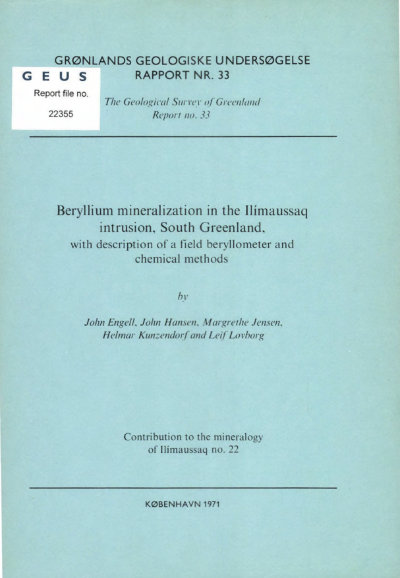Beryllium mineralization in the Ilímaussaq intrusion, South Greenland
DOI:
https://doi.org/10.34194/rapggu.v33.7247Abstract
In the peralkaline Ilimaussaq intrusion in South Greenland minor quantities of beryllium minerals are widespread in hydrothermal veins. Concentrations of veins rich in beryllium minerals are known from the Taseq slope and the Kvanefjeld area in the northern part of the intrusion. Up to now 10 beryllium minerals have been found, the most important being chkalovite. The hydrothermal veins range in width from about 1 mm to 2 m but are mostly a few cm thick. The most important minerals in the veins are analcime, sodalite, ussingite, natrolite, aegirine, arfvedsonite, epistolite and chkalovite. A field beryllometer based on the photoneutron method of determining beryllium is described. With a 100 mCi Sb124 activation source the instrument has a limit of detection ofless than 10 ppm BeO. The effective measuring area is ca. 40 cm2. Beryllium has a log-normal distribution in the rocks of the area.
Downloads
Published
Issue
Section
License
This article is distributed under a CC-BY 4.0 licence, permitting free redistribution and reproduction for any purpose, even commercial, provided proper citation of the original work. Author(s) retain copyright over the article contents.


